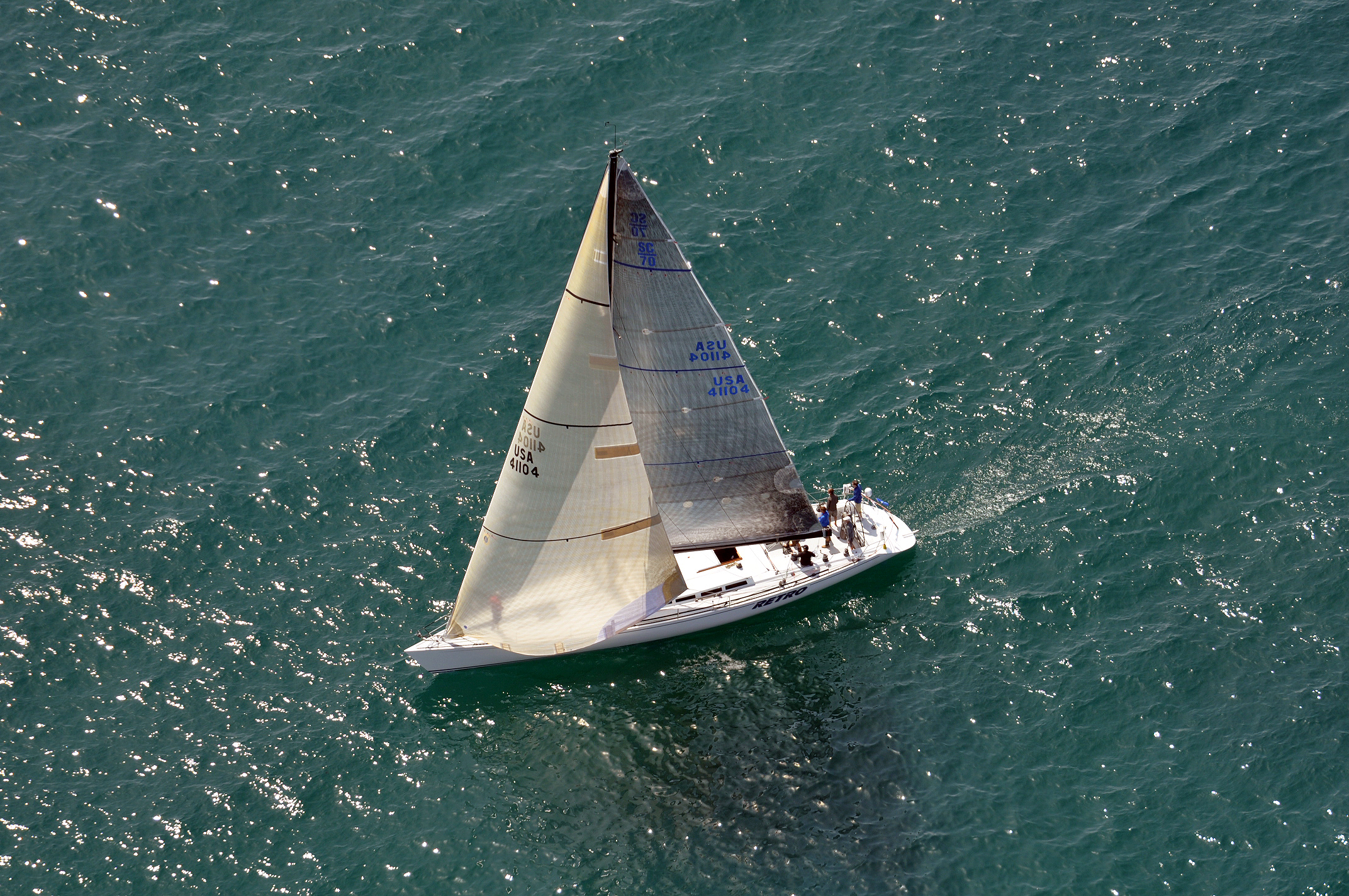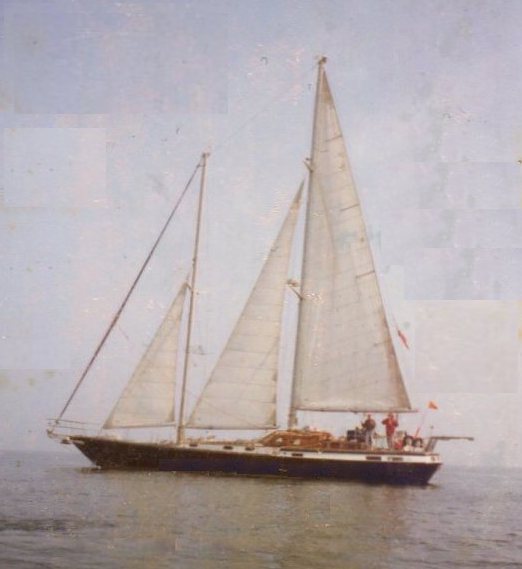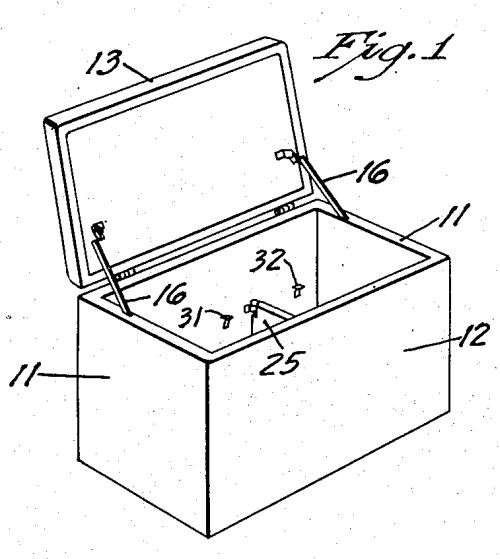|
Marlin 23
The Marlin 23, also called the Marlin Heritage, is an American trailerable sailboat that was designed by Nathanael Greene Herreshoff and A. Sidney DeWolf Herreshoff, first built in 1958.Henkel, Steve: ''The Sailor's Book of Small Cruising Sailboats'', page 223. International Marine/McGraw-Hill, 2010. The boat design is a development of the 1920s Nathanael Greene Herreshoff design, the Herreshoff Fish, with a new cabin and rig design, drawn by Nathaniel's son, A. Sidney DeWolf Herreshoff. The Fish was itself an enlarged version of the 1914 Nathanael Greene Herreshoff-designed Herreshoff 12½. Production The design was originally built of wood by Herreshoff Manufacturing. It was later built of fiberglass by Cape Cod Shipbuilding in the United States and was one of the earliest fiberglass boats produced, with 160 boats completed. it remains in production as the Marlin Heritage, with a updated features. Design A. Sidney DeWolf Herreshoff's changes to the Fish class to create ... [...More Info...] [...Related Items...] OR: [Wikipedia] [Google] [Baidu] |
Nathanael Greene Herreshoff
Nathanael Greene Herreshoff (March 18, 1848 – June 2, 1938) was an American naval architect, mechanical engineer, and yacht design innovator. He produced a succession of undefeated America's Cup defenders between 1893 and 1920. Biography Herreshoff was born on March 18, 1848, in Bristol, Rhode Island and was named after General Nathanael Greene. He was one of seven brothers. He graduated from the Massachusetts Institute of Technology in 1870 with a three-year degree in mechanical engineering. After graduation, he took a position with the Corliss Steam Engine Company in Providence, Rhode Island. At the 1876 Centennial Exposition in Philadelphia, Pennsylvania, he oversaw operation of the Corliss Stationary Engine, a , dynamo that powered the exhibition's machinery. In 1878 Herreshoff returned to Bristol where he and one of his brothers, John Brown Herreshoff (1841–1915), who was blind, formed the Herreshoff Manufacturing Company. Nathanael provided the engineering expertise ... [...More Info...] [...Related Items...] OR: [Wikipedia] [Google] [Baidu] |
Herreshoff 12½
The Herreshoff 12½ Footer is a one-design keelboat. History Nathanael Greene Herreshoff designed the 12½ footer in 1914. It has been in continuous production since then, and is nearly universally acclaimed as one of the finest small boats of all time He was 66 years old by then, and had all the experience from a full and legendary career of designing and building yachts. He had already accumulated 5 of the never-matched record of 6 consecutive America's Cup defenses, and 6 consecutive victories. The Herreshoff Manufacturing Company Nathanael Greene Herreshoff (March 18, 1848 – June 2, 1938) was an American naval architect, mechanical engineer, and yacht design innovator. He produced a succession of undefeated America's Cup defenders between 1893 and 1920. Biography H ... took the first orders for the 12½ footer in 1914 and built 364 wooden hulls through 1943. Following the closing of HMC production, the Quincy Adams Yacht Yard was licensed by HMC to build the des ... [...More Info...] [...Related Items...] OR: [Wikipedia] [Google] [Baidu] |
Genoa (sail)
A genoa sail is a type of large jib or staysail that extends past the mast and so overlaps the main sail when viewed from the side, sometimes eliminating it. It was originally called an "overlapping jib" and later a genoa jib. It is used on single-masted sloops and twin-masted boats such as yawls and ketches. Its larger surface area increases the speed of the craft in light to moderate winds; in high wind, a smaller jib is usually substituted, and downwind a spinnaker may be used. Definition The term ''jib'' is the generic term for any of an assortment of ''headsails''. The term ''genoa'' (or genny) refers to a type of jib that is larger than the 100% foretriangle, which is the triangular area formed by the point at which the stay intersects the mast, and deck or bowsprit, and the line where the mast intersects deck at the rail. Colloquially the term is sometimes used interchangeably with ''jib''. A working jib is no larger than the 100% foretriangle. A genoa is larger, with ... [...More Info...] [...Related Items...] OR: [Wikipedia] [Google] [Baidu] |
Roller Furling
Roller furling is a method of furling (i.e. reefing) a yacht's staysail by rolling the sail around a stay. Roller furling is typically used for foresails such as jibs or genoas. A mainsail may also be furled by a similar system, whereby the sail is furled within the mast or around a rotating boom (or around a rotating shaft within a boom). Although staysail roller-furling is effective and very common, in-mast or in-boom mainsail furling involves some compromises, and mainsail slab reefing gives a better sail shape. Methods The idea for a furling jib is usually attributed to Major E du Boulay in England who invented a device similar to a roller blind for reefing a jib. Major Wykeham-Martin used one of Boulay's rollers and improved the system by incorporating roller bearings in 1907 when the system was patented. The original castings were made by London-based toilet makers Bouldings. By the 1940s nearly every British cruising yacht was fitted with this furling system. An earl ... [...More Info...] [...Related Items...] OR: [Wikipedia] [Google] [Baidu] |
Head (watercraft)
The head (pl. heads) is a ship's toilet. The name derives from sailing ships in which the toilet area for the regular sailors was placed at the head or bow of the ship. Design In sailing ships, the toilet was placed in the bow somewhat above the water line with vents or slots cut near the floor level allowing normal wave action to wash out the facility. Only the captain had a private toilet near his quarters, at the stern of the ship in the quarter gallery. The plans of 18th-century naval ships do not reveal the construction of toilet facilities when the ships were first built. The Journal of Aaron Thomas aboard HMS ''Lapwing'' in the Caribbean Sea in the 1790s records that a canvas tube was attached, presumably by the ship's sailmaker, to a superstructure beside the bowsprit near the figurehead, ending just above the normal waterline. In many modern boats, the heads look similar to seated flush toilets but use a system of valves and pumps that brings sea water into the toi ... [...More Info...] [...Related Items...] OR: [Wikipedia] [Google] [Baidu] |
Cooler
A cooler, portable ice chest, ice box, cool box, chilly bin (in New Zealand), or esky ( Australia) is an insulated box used to keep food or drink cool. Ice cubes are most commonly placed in it to help the contents inside stay cool. Ice packs are sometimes used, as they either contain the melting water inside, or have a gel sealed inside that stays cold longer than plain ice (absorbing heat as it changes phase). Coolers are often taken on picnics, and on vacation or holiday. Where summers are hot, they may also be used just for getting cold groceries home from the store, such as keeping ice cream from melting in a hot automobile. Even without adding ice, this can be helpful, particularly if the trip home will be lengthy. Some coolers have built-in cupholders in the lid. They are usually made with interior and exterior shells of plastic, with a hard foam in between. They come in sizes from small personal ones to large family ones with wheels. Disposable ones are made solely ... [...More Info...] [...Related Items...] OR: [Wikipedia] [Google] [Baidu] |
Companionway
In the architecture of a ship, a companion or companionway is a raised and windowed hatchway in the ship's deck (ship), deck, with a ladder leading below and the hooded entrance-hatch to the main cabins. A companionway may be secured by doors or, commonly in sailboats, ''hatch boards'' which fit in grooves in the companionway frame. This allows the lowest board to be left in place during inclement weather to minimize water infiltration. The term may be more broadly used to describe any ladder between decks. File:Hatchboards.JPG, Set of hatch boards in companionway hatch. File:Hatchboards2.JPG, Set of hatch boards with top board removed. See also Glossary of nautical terms References {{sailing ship elements Rooms Water transport Nautical terminology ... [...More Info...] [...Related Items...] OR: [Wikipedia] [Google] [Baidu] |
Galley (kitchen)
The galley is the compartment of a ship, train, or aircraft where food is cooked and prepared. It can also refer to a land-based kitchen on a naval base, or, from a kitchen design point of view, to a straight design of the kitchen layout. Ship's cooking area A galley is the cooking area aboard a vessel, usually laid out in an efficient typical style with longitudinal units and overhead cabinets. This makes the best use of the usually limited space aboard ships. It also caters for the rolling and heaving nature of ships, making them more resistant to the effects of the movement of the ship. For this reason galley stoves are often gimballed, so that the liquid in pans does not spill out. They are also commonly equipped with bars, preventing the cook from falling against the hot stove. A small cooking area on deck was called a caboose or ''camboose'', originating from the nl, kombuis, which is still in use today. In English it is a defunct term used only for a cooking area that i ... [...More Info...] [...Related Items...] OR: [Wikipedia] [Google] [Baidu] |
Marine Propulsion
Marine propulsion is the mechanism or system used to generate thrust to move a watercraft through water. While paddles and sails are still used on some smaller boats, most modern ships are propelled by mechanical systems consisting of an electric motor or internal combustion engine driving a propeller, or less frequently, in pump-jets, an impeller. Marine engineering is the discipline concerned with the engineering design process of marine propulsion systems. Human-powered paddles and oars, and later, sails were the first forms of marine propulsion. Rowed galleys, some equipped with sail, played an important early role in early human seafaring and warfares. The first advanced mechanical means of marine propulsion was the marine steam engine, introduced in the early 19th century. During the 20th century it was replaced by two-stroke or four-stroke diesel engines, outboard motors, and gas turbine engines on faster ships. Marine nuclear reactors, which appeared in the ... [...More Info...] [...Related Items...] OR: [Wikipedia] [Google] [Baidu] |
Outboard Motor
An outboard motor is a propulsion system for boats, consisting of a self-contained unit that includes engine, gearbox and propeller or jet drive, designed to be affixed to the outside of the transom. They are the most common motorised method of propelling small watercraft. As well as providing propulsion, outboards provide steering control, as they are designed to pivot over their mountings and thus control the direction of thrust. The skeg also acts as a rudder when the engine is not running. Unlike inboard motors, outboard motors can be easily removed for storage or repairs. In order to eliminate the chances of hitting bottom with an outboard motor, the motor can be tilted up to an elevated position either electronically or manually. This helps when traveling through shallow waters where there may be debris that could potentially damage the motor as well as the propeller. If the electric motor required to move the pistons which raise or lower the engine is malfunctioni ... [...More Info...] [...Related Items...] OR: [Wikipedia] [Google] [Baidu] |
Tiller
A tiller or till is a lever used to steer a vehicle. The mechanism is primarily used in watercraft, where it is attached to an outboard motor, rudder post or stock to provide leverage in the form of torque for the helmsman to turn the rudder. A tiller may also be used in vehicles outside of water, and was seen in early automobiles. On vessels, a tiller can be used by the helmsman directly pulling or pushing it, but it may also be moved remotely using tiller lines or a ship's wheel. Rapid or excessive movement of the tiller results in an increase in drag and will result in braking or slowing the boat. Description A tiller is a lever used to steer a vehicle. It provides leverage in the form of torque to turn the device that changes the direction of the vehicle, such as a rudder on a watercraft or the surface wheels on a wheeled vehicle. A tiller can be used by directly pulling or pushing it, but it may also be moved remotely using tiller lines or a ship's wheel; some kay ... [...More Info...] [...Related Items...] OR: [Wikipedia] [Google] [Baidu] |
Transom (nautical)
A transom is the vertical reinforcement which strengthens the stern of a boat. This flat termination of the stern is typically above the waterline. The term was used as far back as Middle English in the 1300s, having come from Latin ''transversus'' (transverse) via Old French ''traversain'' (set crosswise). The stern of a boat is typically vertical. It can be raked such that there is an overhang above the water, as at the bow. A reverse transom is angled from the waterline forwards. Transoms can be used to support a rudder, outboard motor, or as a swimming and access platform. Gallery File:The Bermuda cedar (Juniperus bermudiana) transom of Spirit of Bermuda, 2016.jpg, The Bermuda cedar transom of the Spirit of Bermuda File:Sea Scooter transom.jpg, Flat transom on a dinghy with mount points for a rudder. File:Coble on shore at Boulmer (2) - geograph.org.uk - 1381157.jpg, Raked transom with rudder mount points. File:CS 30 Sailboat Kelsea 0297.jpg, Reverse transom with rudde ... [...More Info...] [...Related Items...] OR: [Wikipedia] [Google] [Baidu] |






